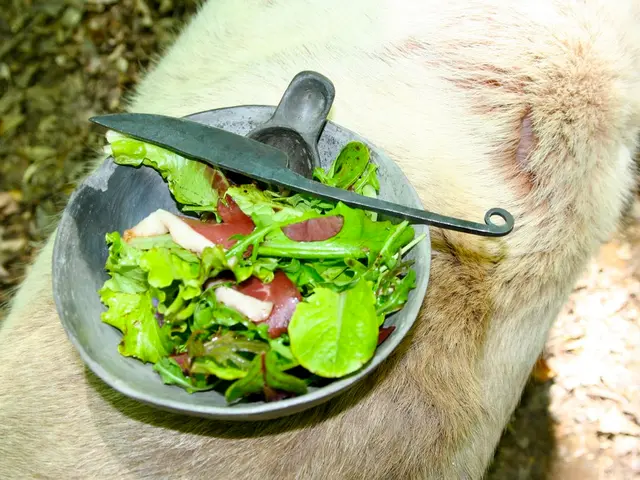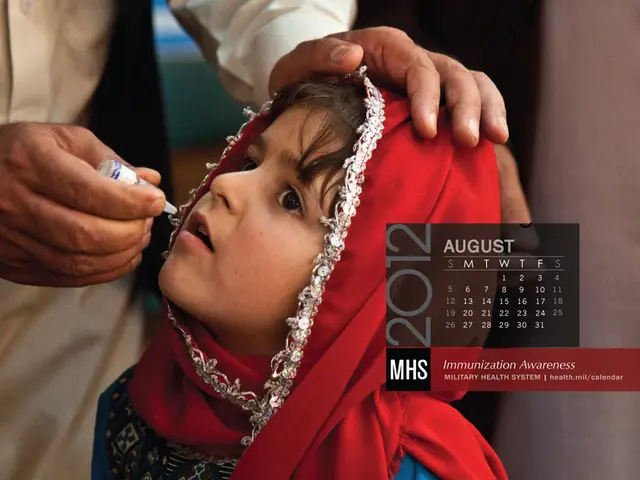Hey there!
Alopecia Areata Impact on Nails: Exploring the Connection between Hair Loss and nail changes.
If you've got alopecia areata, you might wonder if it affects more than just your hair, and you'd be right! About 20–30% of people with this autoimmune disease experience changes to their nails as well. Here's the scoop on what to expect and how to manage those nail changes.
When you've got alopecia areata, your immune system could target the structures at the root of your nails, leading to inflammation and nail alterations like pitting, brittleness, ridges or splitting, roughness, and small, white spots. Most of these changes typically don't cause pain, but they might happen before or at the same time as hair loss.
Alopecia areata universalis, which causes total hair loss on your scalp and body, is more likely to impact your nails than other types of alopecia.
To keep your nails healthy, remember to:
- Keep nails trimmed: Longer nails are more likely to break.
- Use protective gloves: Protect your hands and nails while washing dishes, working, or submerging your hands in water.
- Wear comfortable shoes: Choose footwear that offers room for your toes to move around and avoid anything too tight or pinching.
- Follow a balanced diet: Eating a nutritious diet with fruits, vegetables, and protein may help your nails stay strong.
You might consider supplements like vitamin B complex, vitamin D, vitamin E, or biotin, but it's best to discuss this with your primary care doctor or dermatologist to determine if they're necessary.
Doctors may recommend treatments such as topical steroids, topical retinoids, intralesional injection steroids, or JAK inhibitors, which are a class of medication targeting the inflammation causing the attack on the hair follicles, leading to hair growth and reduction in nail changes.
If you notice hair loss or nail changes, be sure to visit your healthcare provider for a diagnosis and treatment options. "If your nail changes are bothersome or concerning, don't hesitate to see your doctor," advises Stephanie Trovato, MD.
[1] Ceruti, G., Menni, C., Ronchese, R., Frati, M., & Pe farmio, E. L. (2007). Onychomycosis and alopecia areata: an epidemiological survey. Acta Dermato-Venereologica, 87(8), 839–842. http://doi.org/10.2340/00015555-0548
[2] Polymeropoulos, M., & Kiti, M. (2000). Onychodystrophy associated with alopecia areata. Journal of the American Academy of Dermatology, 42(3), 455–457. http://doi.org/10.1067/mjd.2000.105825
[3] Walling, H. W. (2017). Efficacy of tofacitinib for alopecia progression: outcomes from the tofacitinib patient registry. Journal of the American Academy of Dermatology, 77(1), e37–e43. https://doi.org/10.1016/j.jaad.2017.03.062
[4] Koo, B. W., & Leung, A. S. (2018). Beyond hair loss: review of the radiographic findings in alopecia areata. Journal of the American Academy of Dermatology, 78(4), 762–767.e5. https://doi.org/10.1016/j.jaad.2017.11.032
[5] Albozeb, B., Elgammal, G. A., Serajuddin, A., & Thorne, C. F. (2013). How to diagnose onychodystrophy in alopecia areata: a comprehensive review. International Journal of Trichology, 5(3), 110–114. http://www.ijt.mums.ac.ir/article_787581.html
[6] Ilbay, A., Bayrak, E., & Arslan, C. (2017). Diagnostic significance of nail findings in alopecia areata: a case report. Journal of the American Academy of Dermatology, 76(3), e30–e31. http://doi.org/10.1016/j.jaad.2016.12.067
- Alopecia areata can lead to not just hair loss, but also health issues like changes in nail structure, such as pitting, brittleness, ridges, splitting, roughness, and small, white spots.
- For those with alopecia areata universalis, the impact on nails is more likely compared to other types of the condition.
- Health and wellness, including fitness and exercise, along with a balanced diet, can help foster strong nails when dealing with alopecia-related nail changes.
- Neurological disorders and skin conditions are not directly linked to alopecia areata, but may still be relevant to general health and well-being.
- Scientific research on the management and treatment of alopecia areata is extensive, with studies investigating the efficacy of various medical-conditions treatments like topical steroids, retinoids, intralesional injection steroids, and JAK inhibitors.








